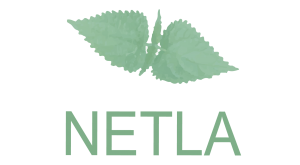Language samples in Icelandic: Age reference data
Keywords:
language samples, mean length of utterance, vocabulary, grammatical error, gender-differencesAbstract
The purpose of this study was to obtain age reference data for oral language samples obtained from Icelandic preschoolers in spontaneous speech, based on short speech samples. Icelandic is highly inflected language compared to English. Icelandic nouns, adjectives, pronouns and even some numbers have inflectional endings. These endings mark gender, number and case. Verbs inflections are complex as well, the verbs are inflected for tenses, moods, persons, voices and numbers differentiated by inflectional endings as well as vowel changes. Studies have shown that non-linear relationship exist between vocabulary size and the emergence of verb inflection and sentence complexity in Icelandic speakers as well as in English speakers (Elin Thordardottir, Ellis Weismer and Evans, 2002). Of interest is therefore to obtain age referenced data on vocabulary size and the length of sentences in speech samples and not at least to investigate the proportion of grammatical errors. In current study following metrics were evaluated: mean length of utterance in words (MLU), mean number of total words (TW), mean number of different words (NDW), and proportion of grammatical errors. Gender differences were also calculated for the metrics of interest. Participants were 221 Icelandic preschool children aged 2;6–6;6 years. All participants were monolingual and, prior to the study, had not been diagnosed with any developmental disorders. The sample was a convenience sample, with nine preschools selected (eight in the capital city and one in the south part of the country). Consent letter was sent to all children in the specified agerange within the selected preschools and 53% of the parents consented to their child’s participation. The language samples were collected within the preschools and subsequently transcribed and analyzed. All the speech samples were obtained by specially trained university students. The transcript followed guidelines based on transcribing English language samples (see, MacWhinney, 2009; Miller and Chapman, 1993) but was adapted into Icelandic (Jóhanna T. Einarsdóttir and Þóra Sæunn Úlfsdóttir, 2014). The words or the token were transcribed as correctly as possible but not coded according to the different inflectional possibilities. The interrater reliability was calculated as from 83 to 97% for the MLUw and the TW. The software Málgreinir (Jóhanna T. Einarsdóttir and Jón Benediktsson, 2014) was used to analyze the samples. The results were based on the first 50 utterances of spontaneous speech produced by the child. The results demonstrate that MLUw increased with increasing age, the mean for the 2 year old children was 2,7 words in a sentence whereas the mean was 5,5 words in a sentence for the 6 year old children. The number of TW (tokens) increased from 134 words for the 2 year old children to 273 for the 6 year old children. The NDW increased from 64 words for the 2 year olds to 130 for the 6 year olds. Intrestingly the grammatical errors were relatively rare in the children’s spontaneous speech but, nevertheless, decreased significantly with age. The proportion of words with errors was around 4% for the 2 year olds but about 1,3% for the 6 year olds. The distribution within age groups demonstrated high individual variability for length of utterances and the number of total words, as well as the number of different words. No significant gender differences were identified. The results are important for everyone working with or investigating language acquisition of Icelandic children. They have relevance for the assessment of language disorders and Icelandic as a second language, as well as planning and assessing the progress of intervention. The evaluation of spontaneous speech is an important addition to standardized assessment and investigation of language.
